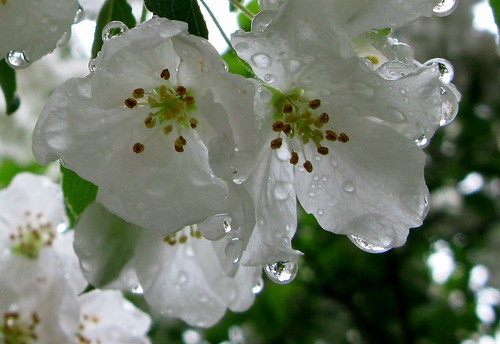We finally dumped Crappy Internet Nonprovider and signed up for Hughes Net. We're paying more, and they bolted an ugly dish to my roof, but we can at least connect.
And now that I'm here, I can't figure out where to start. To follow up on the dodder issue in the last post, it's worse than we hoped. New sprigs have shown up where the first tangle was found, and The Hubby ran into some new areas in the woods at the opposite end of the property. He's fighting the good fight, digging and burning and burning and digging, but it looks like the stuff is here to stay. What're ya gonna do.
On a happier note, I have finally found the perfect hummingbird feeder. It's called The Jewel Box. It attaches to a window - and mine stayed stuck through a hellacious storm that reduced my canvas gazebo to tatters. The part that actually mounts is an ant moat. the center is a removable lidded box, easy to clean and fill, that offers an unobstructed view. It looks like this:
 I started feeding hummers with a four-sided, plastic, window-mounted affair with a clear container at the top that snapped into a red base. The base's seams leaked constantly. Afraid that glue would hurt the birds, I spent a lot of time dripping hot wax onto the thing, which sort of worked and mostly didn't.
I started feeding hummers with a four-sided, plastic, window-mounted affair with a clear container at the top that snapped into a red base. The base's seams leaked constantly. Afraid that glue would hurt the birds, I spent a lot of time dripping hot wax onto the thing, which sort of worked and mostly didn't. Plan B was a clear round saucer with an inverted red saucer on top that hung from a hook on the deck. It never hung straight, so one side had no liquid and the other leaked all over. It couldn't be mounted on the window, either. All of which became moot when the raccoons discovered it and chewed off all the little yellow flower-shaped ports. After that, the wasps took it over.
Plan C: Little plastic tubes with screw-on red bases that could be hung in places raccoons couldn't reach. Turns out raccoons can reach those places after all. So could ants, which was really, really gross.
I gave up at that point until The Hubby presented me with the little test-tube affair in the photo below.
 It's cute, in a Rube Goldberg way, but it only holds about two hours worth of syrup.
It's cute, in a Rube Goldberg way, but it only holds about two hours worth of syrup.It came with a separate, twisted wire thingy that slipped onto the tube and served as a perch. The perch was quickly commandeered by a particularly aggressive little fellow that chased away all the other birds. (We dubbed him Arnold, AKA "The Humminator".)
Hubby then showed me the catalog where he got the test tube feeder and pointed out The Jewel Box. It's pricey, but it's worth it. It even comes in a sturdy, attractive box, which will be nice for winter storage.
Don't you just love stuff that works?









